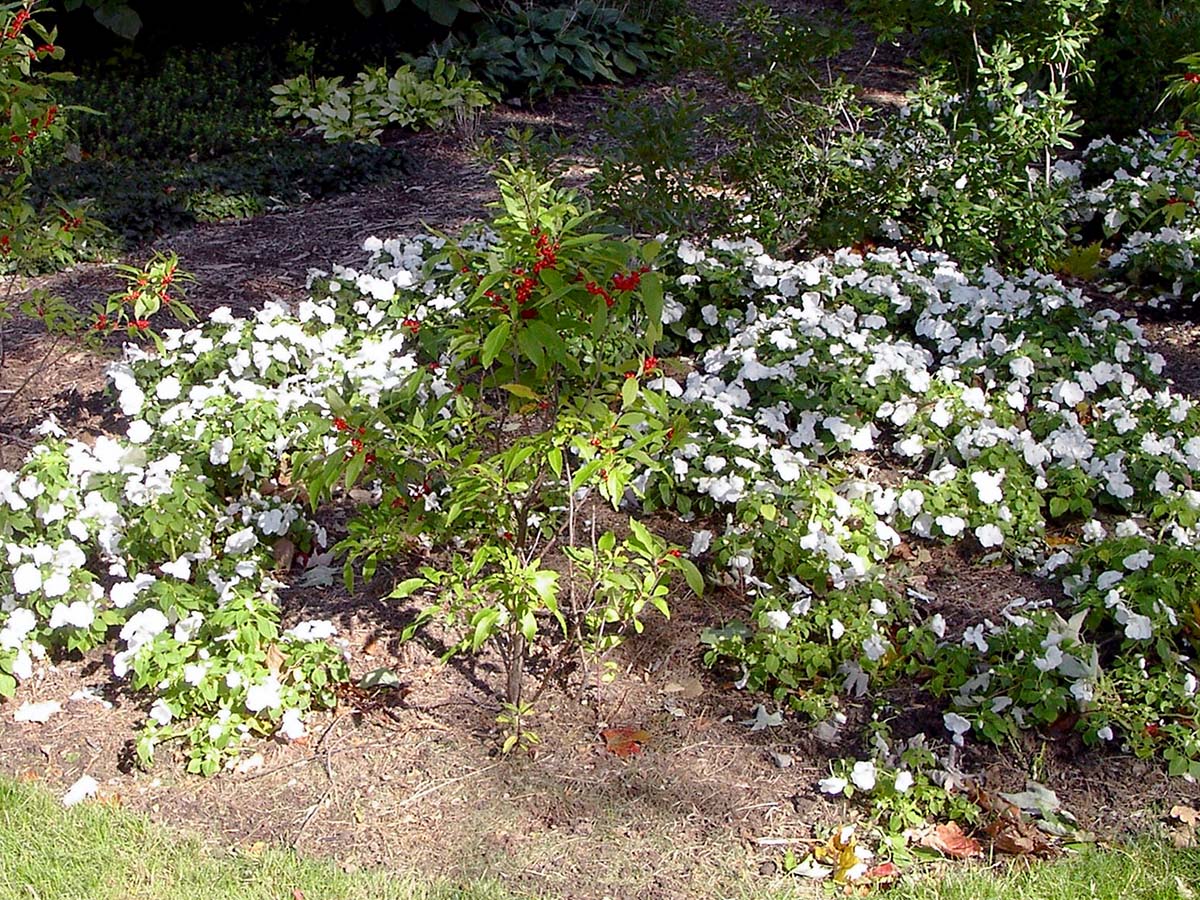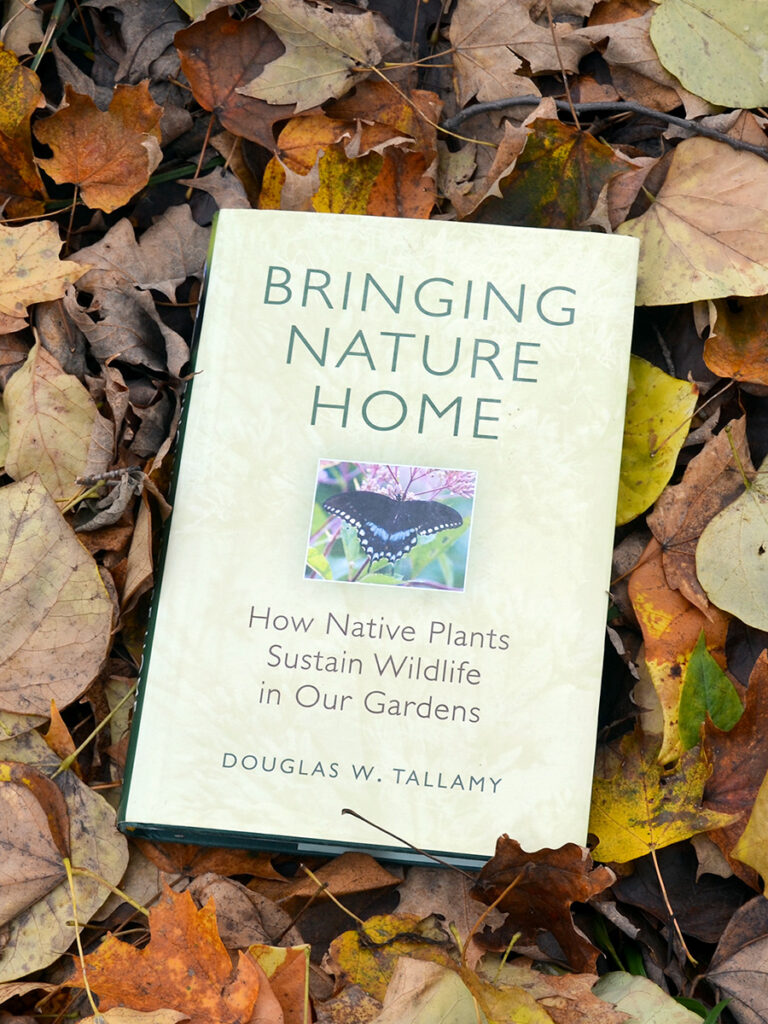Food is the most obvious of the “habitat basics.” As obvious as it is, though, our former ornamental gardens with all of those pretty flowers weren’t providing much food for wildlife — just “eye candy” for people.

We starting creating our habitat garden by planting some shrubs that had flowers for pollen and nectar in the spring, then produced berries in the fall, such as these winterberries. We even stopped deadheading everything so that there were seeds for the birds. Still, though, we were still planting lots of annual bedding plants for “color.” They may have produced some color, but not much else! I never saw anything using these impatiens.
Then we heard about the special importance of native plants. But even after I understood that native plants were “best,” I realized that I didn’t really know WHY. It just seemed that natives were obviously the most appropriate plants, creating a “sense of place.”

The biggest change came when we (and so many other people across the nation!) read Douglas Tallamy’s Bringing Nature Home.
He explained WHY native plants are important: Because insects — the foundation of the food web — generally can eat only native plants, the ones they had evolved with. After all, plants don’t want to be eaten, so they had developed various chemical defenses against insects, which certain insects had evolved to overcome.
We also now understood that our Central NY region was meant to be primarily woodlands, so we focus on providing as many native trees, shrubs, and other plants that we can fit in our limited space in the suburbs.
Here are some specific examples of how we provide food for the creatures in our yard:
Resources
Douglas Tallamy books: Since the original Bringing Nature Home (pictured), Tallamy updated Bringing Nature Home, co-authored The Living Landscape, written Nature’s Best Hope (2020) and written The Nature of Oaks (2021). All are highly recommended!
Reflections
To me the choice is clear. The costs of increasing the percentage and biomass of natives in our suburban landscapes are small, and the benefits are immense. Increasing the percentage of natives in suburbia is a grassroots solution to the extinction crisis. … Our success is up to each one of us individually. We can each make a measurable difference almost immediately by planting a native nearby. As gardeners and stewards of our land, we have never been so empowered — and the ecological stakes have never been so high.
~ Douglas Tallamy, Bringing Nature Home
